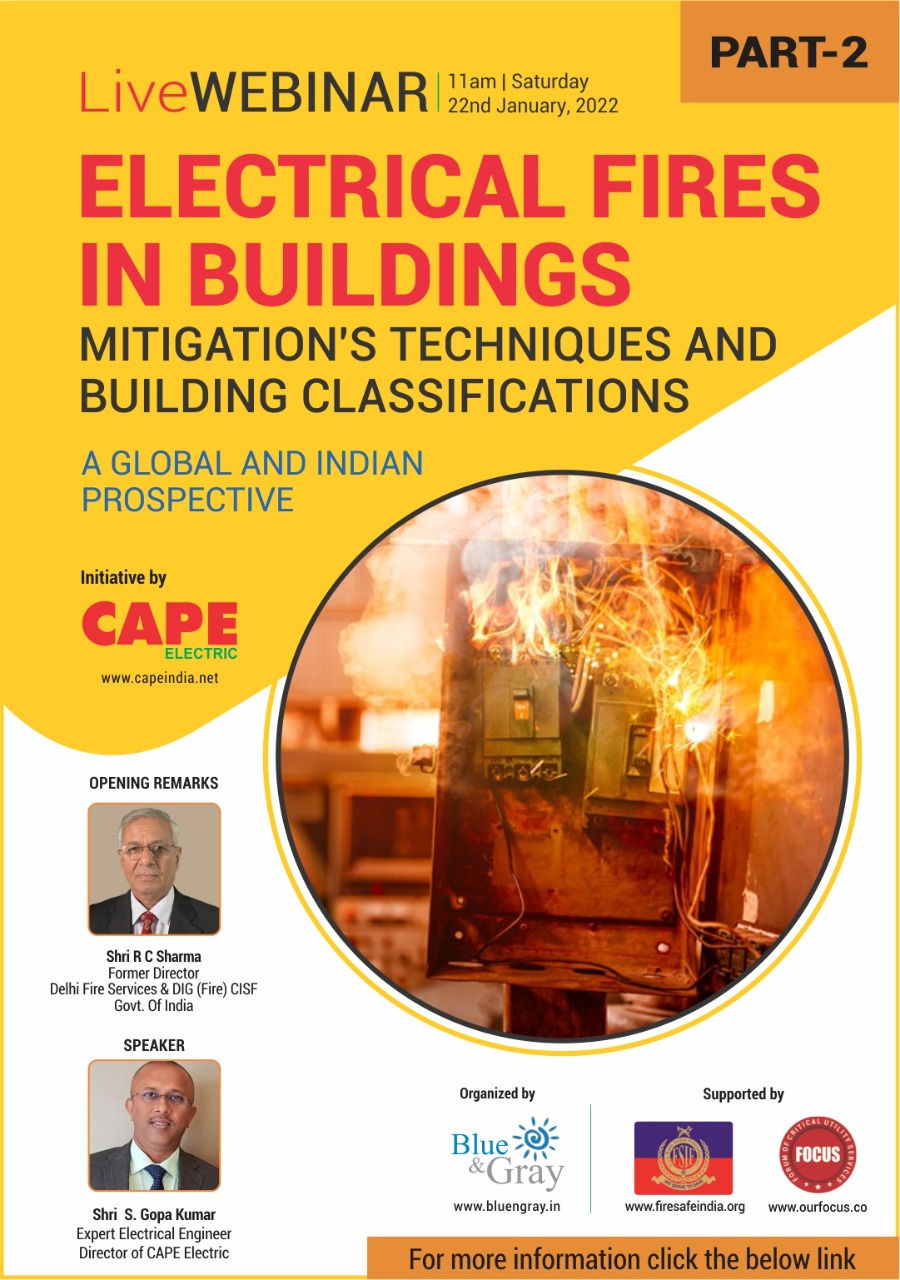ELECTRICAL FIRE DUE TO SHORT CIRCUIT & ELECTRICAL SAFETY – Part 3
- SOLVE

- Feb 8, 2022
- 4 min read
Updated: Mar 1, 2022
Misunderstandings and MAGIC device as savior
Misunderstandings and misinterpretations are often the reasons for diluting the electrical safety requirements, which are leading to accidents such as fire due to short circuit.
If the technical requirement are understood, most electrical engineers would follow the regulations and code of practices, without compromise. However enhancing the knowledge of each engineer to a high level of understanding require time and effort.
In the part 3 of our webinar series "FIRE DUE TO SHORT CIRCUIT" we try to address some mis concepts and the right way to be followed to achieve safety.
Some engineers dream to get a magic device which would solve all electrical safety and reliability challenges. Manufacturers utilize this opportunity and sell "ELECTRICAL NONSENCE" in the market. There are magic devices available in the market which claim to protect against OVER CURRENT, SHORT CIRCUIT, EARTH FAULT, SURGES, SHOCK, FIRE, …… ……. ……. etc, but is not practical & is illegal.
Electrical safety cannot be achieved by installing a magic device, but is achieved by making a good installation satisfying the requirements of regulations and code of practices. These Code of practices are made based on several decades of research and studies.

Fig 1: concept of magic device which solve all safety and reliability problems.
One such "ELECTRICAL NONSENSE" is the "DIGITAL GOUNDING DEVICE". This device claims to solve all dirty problems, but in fact they short the neutral and PE conductor inside this device, violating the decades old regulation (currently regulation no 33 CEA safety regulation). Using this device can camouflage the problem for few days, but lead to disaster such as fire, electrocution and failure of electronics in the building (ref. IS732 on circulating currents through unintended paths and the results) & is a violation of both regulation and code of practice.

Fig 2: Examples of Digital Grounding Device
Mandatory safety requirement (regulation 33): "MINIMUM 1 MEGS OHN INSULATION RESISTANCE IS REQUIRED BTEWEEN LIVE CONDUCTORS AND EARTH IN LV INSTALLATION".
Misuse of IEEE80 for LV application
One such misinterpreted subject is the usage of earth grids and often earth rods designed as per IEEE 80 used in Low Voltage application.
High Voltage Substations use the methods explained in IEEE 80 to reduce the touch and step potential at the substation area. (The practices are, making a grid under soil, placing gravel or high resistance material on surface, etc.). Prospective fault current is considered to design the step and touch potential, the grid spacing is calculated based on fault current, soil resistivity and voltage gradient. This system is well accepted, reliable and used globally. Methods explained in IEEE81 is used to measure the various parameters.

Fig 3: Example of using methods from IEEE80 in a sub station.
Where as in India and some Asian Countries the same techniques (as per IEEE 80) are used for LV system, which is an unnecessary misuse of a standard. E.g. fig 4. The prospective fault current (say 50 kA) at 400 volt (LV side) of transformer is used to calculate touch / step potentials. In a 230 volt LV system (L to PE voltage of a TN/TT 400 volt system), the maximum touch voltage is 230 volt, which is often not considered. The software companies who propagate IEEE80 shall also educate the users about its application and the definition of "AC SUBSTSTION".

Fig 4: Example of IEEE 80 wrongly used in INDIA and some Asian countries
Global Earthing System, MESH-BN and the modern methods
A growing economy like India, with lot of new construction mostly with steel or RCC, it is wise to upgrade the existing systems of earthing to the modern way such as Global Earthing System in locations where EVH/HV/LV/ELV installations are involved including TN-S system for LV application and MESH -BN for ICT applications. This would solve majority of the safety and reliability issues.
70 % fire incidents are due to short circuit - News from Mumbai.
Electrical Engineers working in the field of safety don't believe the above news "70 % of fire incidents are due to short circuit". How ever if we analyse the safety measures implemented and practiced in buildings, in comparison to what is written and to be followed in regulations and code of practices, one can easily find out the "THE MISSING LINKS". There is no reason to reject the above statement from the Mumbai Fire Brigade in this context.
If the proposed electrical safety audits (as per the below news) are made based on the decade old electrical belief's (such as earth pit resistance measurement, danger board availability .. etc), the expected improvements could exist only in dream.

The third part of the Webinar "FIRE DUE TO SHORT CIRCUIT saw successful participation from more than 250 engineers.
In view of the news form Mumbai, we intent to make the Part -4 of our webinar as "How to make electrical safety audits", which will be announced soon.
Videos of the webinar can be viewed in the following links.
Section 1: Introduction
Section 2: main technical presentation
Section 3: Q&A
Since all the Q&A are answered during the webinar, they are not published again. Readers are requested to post their comments.
SOLVE: Safe Operation of Low Voltage Electricity
by Cape Electric






If the neutral is earthed at multiple places, partial neutral current can flow through earth conductor, which may lead to problems such as electrocution, fire and failure of electronics. If the neutral is earthed as per the recommendation of the standard, its safe and no current will flow through protective conductor other than the leakage current.